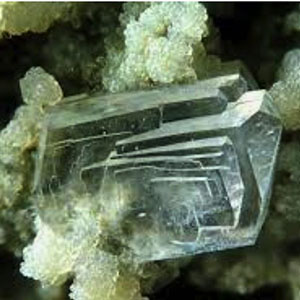Clinoptilolite (E567), a natural zeolite, inclusion in heavy-pig diets: effect on the productive performance and gaseous emissions during fattening and manure storage

Published: 31 March 2022
Abstract Views: 1210
PDF: 486
HTML: 29
HTML: 29
Publisher's note
All claims expressed in this article are solely those of the authors and do not necessarily represent those of their affiliated organizations, or those of the publisher, the editors and the reviewers. Any product that may be evaluated in this article or claim that may be made by its manufacturer is not guaranteed or endorsed by the publisher.
All claims expressed in this article are solely those of the authors and do not necessarily represent those of their affiliated organizations, or those of the publisher, the editors and the reviewers. Any product that may be evaluated in this article or claim that may be made by its manufacturer is not guaranteed or endorsed by the publisher.
Similar Articles
- Zanbin Zhu, Yubin Li, Shoufu Gong, Design and experiment of Internet-of-Things cooling system in glass greenhouse based on computational fluid dynamics simulation , Journal of Agricultural Engineering: Vol. 54 No. 3 (2023)
- Francesca Perazzolo, Gabriele Mattachini, Fulvia Tambone, Aldo Calcante, Giorgio Provolo, Nutrient losses from cattle co-digestate slurry during storage , Journal of Agricultural Engineering: Vol. 47 No. 2 (2016)
- Hui Yang, Yuhao Li, Chengguo Fu, Rongxian Zhang, Haibo Li, Yipeng Feng, Yaqi Zhang, Hongbin Cong, Fuquan Nie, Research on inspection route of hanging environmental robot based on computational fluid dynamics , Journal of Agricultural Engineering: Vol. 55 No. 2 (2024)
- Fabrizio Mazzetto, Pasqualina Sacco, Aldo Calcante, Algorithms for the interpretation of continuous measurement of the slurry level in storage tanks , Journal of Agricultural Engineering: Vol. 43 No. 1 (2012)
- Alvaro Marucci, Danilo Monarca, Andrea Colantoni, Enio Campiglia, Andrea Cappuccini, Analysis of the internal shading in a photovoltaic greenhouse tunnel , Journal of Agricultural Engineering: Vol. 48 No. 3 (2017)
- Celeste Righi Ricco, Alberto Finzi, Viviana Guido, Elisabetta Riva, Omar Ferrari, Giorgio Provolo , Evaluation of ammonia emissions from filtration of digestate used for fertigation , Journal of Agricultural Engineering: Vol. 52 No. 3 (2021)
- Alexandros Sotirios Anifantis, Simone Pascuzzi, Giacomo Scarascia-Mugnozza, Geothermal source heat pump performance for a greenhouse heating system: an experimental study , Journal of Agricultural Engineering: Vol. 47 No. 3 (2016)
- Giorgia Cocolo, Silvia Curnis, Maibritt Hjorth, Giorgio Provolo, Effect of different technologies and animal manures on solid-liquid separation efficiencies , Journal of Agricultural Engineering: Vol. 43 No. 2 (2012)
- Timothy Denen Akpenpuun, Wook Ho Na, Qazeem Opeyemi Ogunlowo, Anis Rabiu, Misbaudeen Aderemi Adesanya, Kwame Sasu Addae, Hyeon Tae Kim, Hyun-Woo Lee, Effect of glazing configuration as an energy-saving strategy in naturally ventilated greenhouses for strawberry (Seolhyang sp.) cultivation , Journal of Agricultural Engineering: Vol. 52 No. 2 (2021)
- Evelia Schettini, Giovanni Puglisi, Fabiana Convertino, Fernando Antonio Cancellara, Giuliano Vox, Greenhouse localized heating powered by a polygeneration system , Journal of Agricultural Engineering: Vol. 52 No. 3 (2021)
You may also start an advanced similarity search for this article.

 https://doi.org/10.4081/jae.2022.1290
https://doi.org/10.4081/jae.2022.1290







